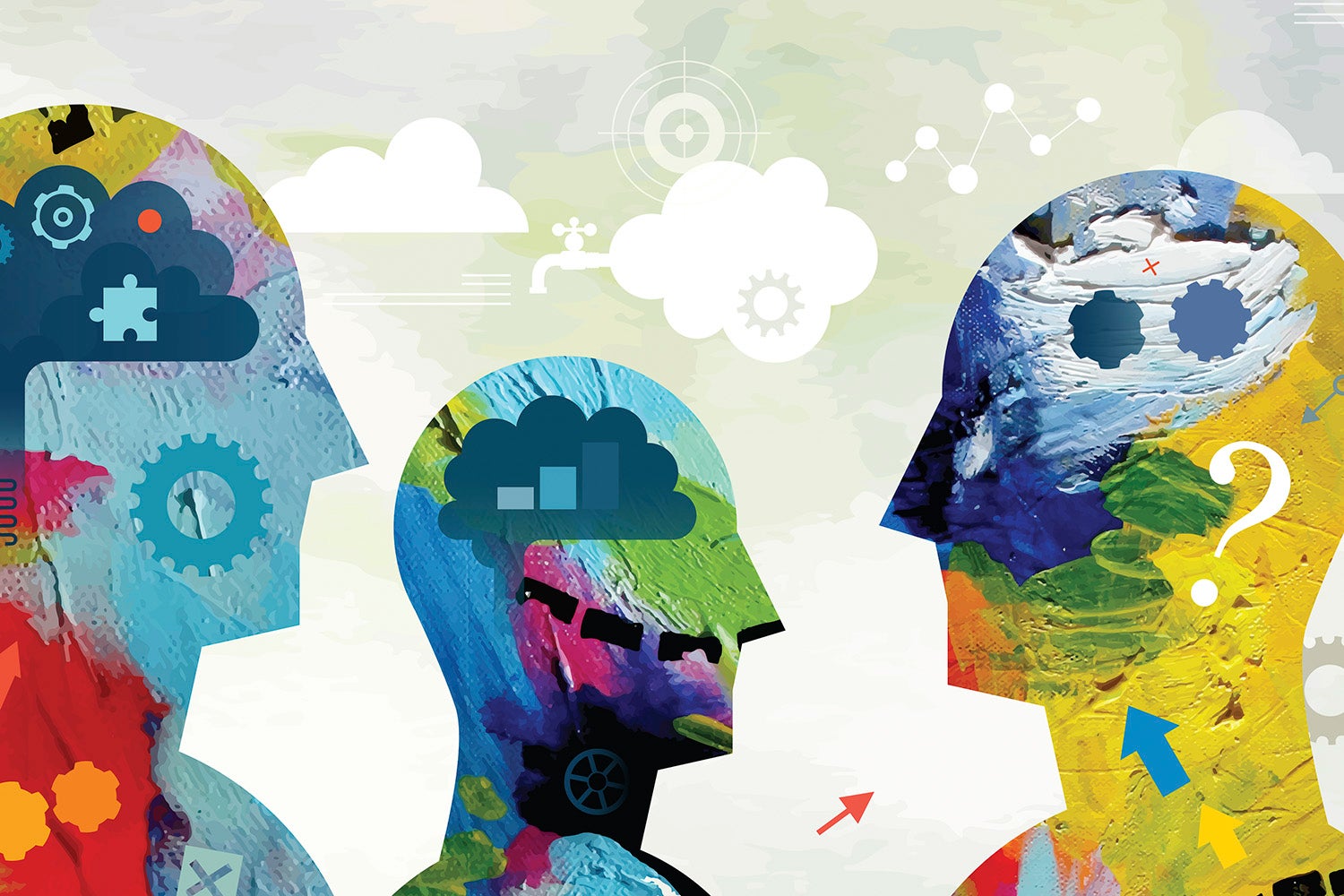Actions not only speak louder than words, they also happen first and faster, Stanford psychologist Barbara Tversky says. Catching a falling cup, rolling one’s eyes at a bad joke – responses like these happen before people find the words to describe their actions and emotions.
In a new book, psychology Professor Emerita Barbara Tversky says that spatial thinking is the foundation of thought and evolved long before language. (Image credit: Getty Images)
That’s why to understand how people think, Tversky argues that one must understand how people act and come to understand the world through their spatial reasoning. Spatial thinking is the foundation of thought and evolved long before language, she says.
Here, Tversky discusses the influence of spatial thinking on abstract thought and communication from her new book, Mind in Motion: How Action Shapes Thought.
Tversky is a professor emerita in psychology in the Stanford School of Humanities and Sciences and a professor of psychology at the Teachers College at Columbia University. She is also the president of the Association for Psychological Science. She has published more than 200 articles about memory, categorization, language, spatial cognition, creativity, design and gesture.
In your book, Mind in Motion: How Action Shapes Thought, you say that spatial thinking, not language, is the foundation of thought. Why?
Spatial thinking comes from moving and acting in the world. All creatures must do so to survive. Actions in space create spatial representations in the brain; simply looking isn’t enough. There are far too many things and possible relations in the world to notice and represent in your mind. Spatial thinking evolved long before language and is supported by all our senses. Altogether half the cortex is involved in spatial thinking.
What’s amazing is that abstract thought uses the same brain circuitry that underlies spatial thought. Thinking is finding relations and paths between things. Just as our feet move from place to place along spatial paths, our minds move from thought to thought along conceptual paths.
Barbara Tversky (Image credit: Roslyn Banish)
Animals perform impressive feats of the mind, yet they seem to lack language as we know it. Babies wow their parents with their cleverness long before they can talk. Extraordinary and ordinary people alike think and make discoveries, both remarkable and mundane, by acting: Einstein imagining flying into space at the speed of light, an architect designing a building, a coach planning a football play and the players executing it. Dodging bicycles walking on campus. Or walkers when we bike. We quickly grasp each other’s actions and intentions and use those to plan our own. All that happens far too fast for words.
Are there other ways that spatial thinking is expressed?
We talk about actions on ideas as if they were actions on objects: We raise ideas, tear them apart, link them together. Our gestures reflect those actions. Gestures are often defined as actions on ideas. Usually we aren’t aware of our gestures, just as we’re not usually aware of selecting each and every word as we talk. Words simply pop out of our mouths and gestures from our bodies. Quite often, information gets expressed in gesture that doesn’t find its way to words. When people tell you how to get from A to B or how to do something – like open a lock or fold a shirt – watch their hands. Gestures are often more precise than words, and certainly more direct.
Gestures do more than help others understand. They actually help us think and talk. Try sitting on your hands and explaining a complex route or process. Research, our own and that of others, has shown that if people are prevented from gesturing when they speak, they have a harder time finding words, and if people are prevented from gesturing when they study complex descriptions, they don’t learn as well.
Gestures – actions of the body – serve as social glue, and our ability to quickly infer intentions, emotions and meaning from these actions enable us to work together.
Where else do we see visual-spatial communication?
Everywhere. In the ways we arrange our homes and the world, books ordered on bookshelves, dishes arranged by size and shape, 1-1 correspondences and repetitions in table settings and facades of building. You see it in maps, timelines, diagrams, graphs and sketches. Designers and artists say that the discoveries they make in their own sketches is a wordless conversation. Music, mathematical notation and even written language have crucial spatial components. Ancient maps, tallies and depictions of events have been found all over the world and fascinate us to this day.
“Gestures do more than help others understand. They actually help us think and talk.”
—Barbara Tversky
Professor Emerita of Psychology
Maps are remarkable for another reason. Maps typically depict environments that can’t be seen from a single place. To make a map either in the mind or on paper, the mind needs to bring together information from many experiences, even multimodal ones. Some errors, predictable ones, inevitably arise from that integration. Here’s one from experiments we did long ago at Stanford: Most people mistakenly think that Berkeley is east of Stanford when in fact it’s west of Stanford. This seems to be because we upright the Bay Area in our minds.
Maps map real spaces and diagrams map conceptual spaces, both in orderly ways. Decades of research have shown that well-crafted maps, diagrams and graphs are more effective than language for conveying a broad range of concepts, certainly STEM concepts, but many others as well.
How can people apply your research to their lives and how they think about thinking and communicating?
Research into spatial thinking can give insight into how we think using the body and the world – what goes on under the tiny tip of the iceberg that is conscious.
Media Contacts
Melissa De Witte, Stanford News Service: (650) 723-6438, mdewitte@stanford.edu

